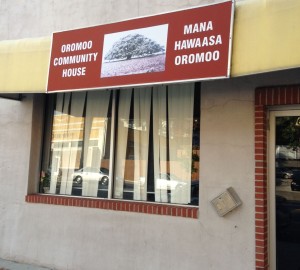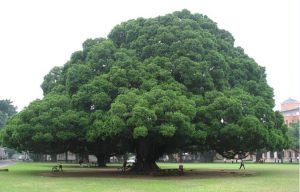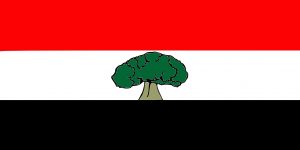
Oromo Community Center Photo credit: Africa Access
Location: 6212 3rd St., NW Washington, DC
“The Oromo Community Center [in Washington, DC] was created to foster unity of purpose and networking among the Oromo people, and to promote the preservation, continuity and development of the Oromo language, culture and traditions. Founded on the enduring concept of Oromuma, the OCO serves the interests of all Oromos.” http://oneoromo.org/about-us/
The largest ethnic group in Ethiopia, the Oromo people (formerly Gallas)number more than 40 million. They are “bound by common history, culture, language, and above all by Oromumma. They constitute well over 40% of Ethiopia’s total population …. They have their own unique language (Afaan Oromo), culture, and democratic governance (the Gada system).” Ibid
 |
 |
| Odaa tree Photo: https://www.afaan-oromoo.com/ |
Oromia Region Flag Photo credit: Wikimedia Commons |
“The whole set of Gadaa political activity including Gadaa rituals, initiation, the handover of power ceremony, revising and enacting customary laws and judiciary practices are held under the shade of Odaa (sycamore)tree…Odaa is customarily believed to be the most respected and the most sacred tree, the shade of which was believed as the source of tranquility” (Hinew)
Resources
Erena, Beekan. “Oromo People.” HarvardScholar.edu Accessed 9/15/2020.
Hinew, D. “Historical Significances of Odaa with Special Reference to Walaabuu.” Research Gate. December 2013. Science, Technology and Arts Research Journal 1(2):81.
Fitsame, Teferra. Counting Addis Ababa : a Counting Book of English, Amharic and Oromiffa. Addis Books, 2010.
